Impact of Processing on the Creep Properties of High Performance Ferritic (HiperFer) Steels
Abstract
1. Introduction
2. Experimental
2.1. Base Metal Production and Processing
2.2. Mechanical Testing
2.3. Microstructural Investigation
3. Results
3.1. Impact of Processing on Initial Microstructure
3.2. Impact of Processing on Creep Properties
3.2.1. Creep Curve Shape
3.2.2. Creep Property Evaluation
3.3. Precipitate Microstructure Evolution during High Temperature Application
4. Conclusions and Outlook
Author Contributions
Funding
Institutional Review Board Statement
Informed Consent Statement
Data Availability Statement
Acknowledgments
Conflicts of Interest
References
- Abe, F.; Kern, T.U.; Viswanathan, R. Alloy design philosophies of creep-resistant steel. In Creep Resistant Steels; Woodhead Publishing Limited: Cambridge, UK, 2008; pp. 541–570. [Google Scholar]
- Viswanathan, R.; Bakker, W. Materials for ultrasupercritical coal power plants—Boiler materials: Part 1. J. Mater. Eng. Perform. 2001, 10, 81–95. [Google Scholar] [CrossRef]
- Zurek, J.; De Bruycker, E.; Huysmans, S.; Quadakkers, W.J. Steam Oxidation of 9% to 12% Cr Steels: Critical Evaluation and Implications for Practical Application. Corrosion 2014, 70, 112–129. [Google Scholar] [CrossRef]
- Abe, F. Bainitic and martensitic creep-resistant steels. Curr. Opin. Solid State Mater. Sci. 2004, 8, 305–311. [Google Scholar] [CrossRef]
- Danielsen, H.K.; Hald, J. Behaviour of Z phase in 9–12% Cr steels. Energy Mater. 2006, 1, 49–57. [Google Scholar] [CrossRef]
- Danielsen, H.K.; Hald, J. Influence of Z-phase on Long-term Creep Stability of Martensitic 9 to 12% Cr Steels. VGB Power Tech. 2009, 5, 68–73. [Google Scholar]
- Kushima, H.; Kimura, K.; Yagi, K.; Tanaka, C.; Maruyama, K. Characterization of Creep Deformation Behaviour for Cr-Mo Steel. In Proceedings of the 7th JIM International Symposium on Aspects of High Temperature Deformation and Fracture in Crystalline Materials, Nagoya, Japan, 28–31 July 1993; Hosoi, Y., Yoshinaga, H., Oikawa, K., Maruyama, K., Eds.; Japan Institute of Metals: Sendai, Japan, 1993; pp. 609–616. [Google Scholar]
- Kimura, K.; Toda, Y.; Kushima, H.; Sawada, K. Creep strength of high chromium steel with ferrite matrix. Int. J. Press. Vessel. Pip. 2010, 87, 282–288. [Google Scholar] [CrossRef]
- Kimura, K. High-Chromium Containing Ferrite Based Heat Resistant Steel. European Patent No. EP1087028B1, 23 November 2005. [Google Scholar]
- Toda, Y.; Tohyama, H.; Kushima, H.; Kimura, K.; Abe, F. Influence of Chemical Composition and Heat Treatment Condition on Impact Toughness of 15Cr Ferritic Creep Resistant Steel. JSME Int. J. Ser. A Solid Mech. Mater. Eng. 2006, 48, 125–131. [Google Scholar] [CrossRef][Green Version]
- Toda, Y.; Tohyama, H.; Kushima, H.; Kimura, K.; Abe, F. Improvement in Creep Strength of Precipitation Strengthened 15Cr Ferritic Steel by Controlling Carbon and Nitrogen Contents. JSME Int. J. Ser. A Solid Mech. Mater. Eng. 2005, 48, 35–40. [Google Scholar] [CrossRef]
- Kimura, K.; Seki, K.; Toda, Y.; Abe, F. Development of High Strength 15Cr Ferritic Creep Resistant Steel with Addition of Tungsten and Cobalt. ISIJ Int. 2001, 41, 121–125. [Google Scholar] [CrossRef]
- Toda, Y.; Seki, K.; Kimura, K.; Abe, F. Effects of W and Co on Long-term Creep Strength of Precipitation Strengthened 15Cr Ferritic Heat Resistant Steels. ISIJ Int. 2003, 43, 112–118. [Google Scholar] [CrossRef]
- Shibuya, M.; Toda, Y.; Sawada, K.; Kushima, H.; Kimura, K. Effect of nickel and cobalt addition on the precipitation-strength of 15Cr ferritic steels. Mater. Sci. Eng. A 2011, 528, 5387–5393. [Google Scholar] [CrossRef]
- Shibuya, M.; Toda, Y.; Sawada, K.; Kushima, H.; Kimura, K. Effect of precipitation behavior on creep strength of 15%Cr ferritic steels at high temperature between 923 and 1023 K. Mater. Sci. Eng. A 2014, 592, 1–5. [Google Scholar] [CrossRef]
- Toda, Y.; Iijima, M.; Kushima, H.; Kimura, K.; Abe, F. Effects of Ni and Heat Treatment on Long-term Creep Strength of Precipitation Strengthened 15Cr Ferritic Heat Resistant Steels. ISIJ Int. 2005, 45, 1747–1753. [Google Scholar] [CrossRef]
- Toda, Y.; Kushima, H.; Kimura, K.; Abe, F. Improvement in creep strength of heat-resistant ferritic steel precipitation-strrengthened by intermetallic compound. Mater. Sci. Forums 2007, 539–543, 2994–2999. [Google Scholar] [CrossRef]
- Lu, Q.; Toda, Y.-; Harada, N.; Xu, W.; van der Zwaag, S. The impact of intended service temperature on the optimal composition of Laves and M23C6 precipitate strengthened ferritic creep resistant steels. Comput. Mater. Sci. 2015, 107, 110–115. [Google Scholar] [CrossRef]
- Kuhn, B.; Talik, M.; Fischer, T.; Fan, X.; Yamamoto, Y.; Lopez Barrilao, J. Science and Technology of High Performance Ferritic (HiperFer) Stainless Steels. Metals 2020, 10, 463. [Google Scholar] [CrossRef]
- Kuhn, B.; Talik, M. HiperFer—High Performance Ferritic Steels. In Proceedings of the 10th Liége Conference on Materials for Advanced Power Engineering, Liége, Belgium, 14–17 September 2014; pp. 264–273. [Google Scholar]
- Kuhn, B.; Talik, M.; Niewolak, L.; Zurek, J.; Hattendorf, H.; Ennis, P.J. Development of high chromium ferritic steels strengthened by intermetallic phases. Mater. Sci. Eng. A 2014, 594, 372–380. [Google Scholar] [CrossRef]
- Wagner, R.; Czempik, E. Konservierung von Kesselanlagen und Turbinen mit dem grenzflächenaktiven Stoff Octadecylamin. VGB Power Tech. 2014, 3, 48–51. [Google Scholar]
- Kuhn, B.; Talik, M.; Lopez Barrilao, J.; Singheiser, L. Microstructure stability of ferritic-martensitic, austenitic and fully ferritic steels under fluctuating loading conditions. In Proceedings of the 1st 123 HiMat Conference on Advanced High-Temperature Materials Technology for Sustainable and Reliable Power Engineering (123HiMAT-2015), Sapporo, Japan, 29 June–3 July 2015; pp. 94–97. [Google Scholar]
- Kuhn, B.; Lopez Barrilao, J.; Fischer, T. “Reactive” Microstructure: The Key to Cost Effective, Fatigue Resistant High Temperature Structural Materials. In Proceedings of the EPRI’s 9th International Conference on Advances in Materials Technology for Fossil Power Plants and the 2nd International 123HiMAT Conference on High-Temperature Materials, Nagasaki, Japan, 21–25 October 2019; pp. 1–10. [Google Scholar]
- Abson, D.J.; Rothwell, J.S. Review of type IV cracking of weldments in 9–12% Cr creep strength enhanced ferritic steels. Int. Mater. Rev. 2013, 58, 437–473. [Google Scholar] [CrossRef]
- Francis, J.A.; Mazur, W.; Bhadeshia, H.K.D.H. Type IV cracking in ferritic power plant steels. Mater. Sci. Technol. 2006, 22, 1387–1395. [Google Scholar] [CrossRef]
- Kuhn, B.; Talik, M.; Lopez Barrilao, J.; Yamamoto, Y. Development Status of High Performance Ferritic (HiperFer) Steels. In Proceedings of the 8th International Conference on Advances in Materials Technology for Fossil Power Plants, Albufeira, Portugal, 11–14 October 2016; pp. 1018–1026. [Google Scholar]
- Talik, M.; Kuhn, B. High Temperature Mechanical Properties of a 17wt%Cr High Performance Ferritic (HiperFer) Steel Strengthened by Intermetallic Laves Phase Particles. In Proceedings of the 9th International Charles Parsons Turbine and Generator Conference, Loughborough, UK, 15–17 September 2015; Available online: https://www.researchgate.net/publication/283714788_High_Temperature_Mechanical_Properties_of_a_17wtCr_High_Performance_Ferritic_HiperFer_Steel_Strengthened_by_Intermetallic_Laves_Phase_Particles (accessed on 28 August 2022).
- Lopez Barrilao, J.; Kuhn, B.; Wessel, E. Microstructure evolution and dislocation behaviour in high chromium, fully ferritic steels strengthened by intermetallic Laves phases. Micron 2018, 108, 11–18. [Google Scholar] [CrossRef] [PubMed]
- Fan, X.; Kuhn, B.; Pöpperlová, J.; Bleck, W.; Krupp, U. Thermomechanically Induced Precipitation in High-Performance Ferritic (HiperFer) Stainless Steels. Appl. Sci. 2020, 10, 5713. [Google Scholar] [CrossRef]
- The European Creep Collaborative Committee: ECCC Datasheets 2014. ASTM Grade 92. 2014. Available online: https://www.eccc-creep.com/eccc-data-sheets/ (accessed on 17 July 2022).
- Fan, X.; Kuhn, B.; Pöpperlová, J.; Bleck, W.; Krupp, U. Compositional Optimization of High-Performance Ferritic (HiperFer) Steels—Effect of Niobium and Tungsten Content. Metals 2020, 10, 1300. [Google Scholar] [CrossRef]
- Lopez Barrilao, J.; Kuhn, B.; Wessel, E.; Talík, M. Microstructure of intermetallic particle strengthened high-chromium fully ferritic steels. Mater. Sci. Technol. 2017, 33, 1056–1064. [Google Scholar] [CrossRef]
- Lopez Barrilao, J.; Kuhn, B.; Wessel, E. Identification, size classification and evolution of Laves phase precipitates in high chromium, fully ferritic steels. Micron 2017, 101, 221–231. [Google Scholar] [CrossRef]
- Kuhn, B.; Asensio Jimenez, C.; Niewolak, L.; Hüttel, T.; Beck, T.; Hattendorf, H.; Singheiser, L.; Quadakkers, W.J. Effect of Laves phase strengthening on the mechanical properties of high Cr ferritic steels for solid oxide fuel cell interconnect application. Mater. Sci. Eng. A 2011, 528, 5888–5899. [Google Scholar] [CrossRef]
- Laughlin, R.B. Pumped thermal grid storage with heat exchange. J. Renew. Sustain. Energy 2017, 9, 044103. [Google Scholar]
- Steinmann, W.D.; Jockenhöfer, H.; Bauer, D. Thermodynamic Analysis of High-Temperature Carnot Battery Concepts. Energy Technol. 2019, 1900895, 1–13. [Google Scholar] [CrossRef]
- Hoffschmidt, B.; Alexopoulos, S.; Göttsche, J.; Sauerborn, M.; Kaufhold, O. High Concentration Solar Collectors. In Comprehensive Renewable Energy; Elsevier: Amsterdam, The Netherlands, 2012; pp. 167–207. [Google Scholar]
- Santos, J.J.C.S.; Palacio, J.C.E.; Reyes, A.M.M.; Carvalho, M.; Freire, A.J.R.; Barone, M.A. Advances in Renewable Energies and Power Technologies. In Solar and Wind Energies; Elsevier: Amsterdam, The Netherlands, 2018; pp. 373–402. [Google Scholar]
- Roeb, M.; Monnerie, N.; Houaijia, A.; Thomey, D.; Sattler, C. Solar Thermal Water Splitting. In Renewable Hydrogen Technologies; Elsevier: Amsterdam, The Netherlands, 2013; pp. 63–84. [Google Scholar]

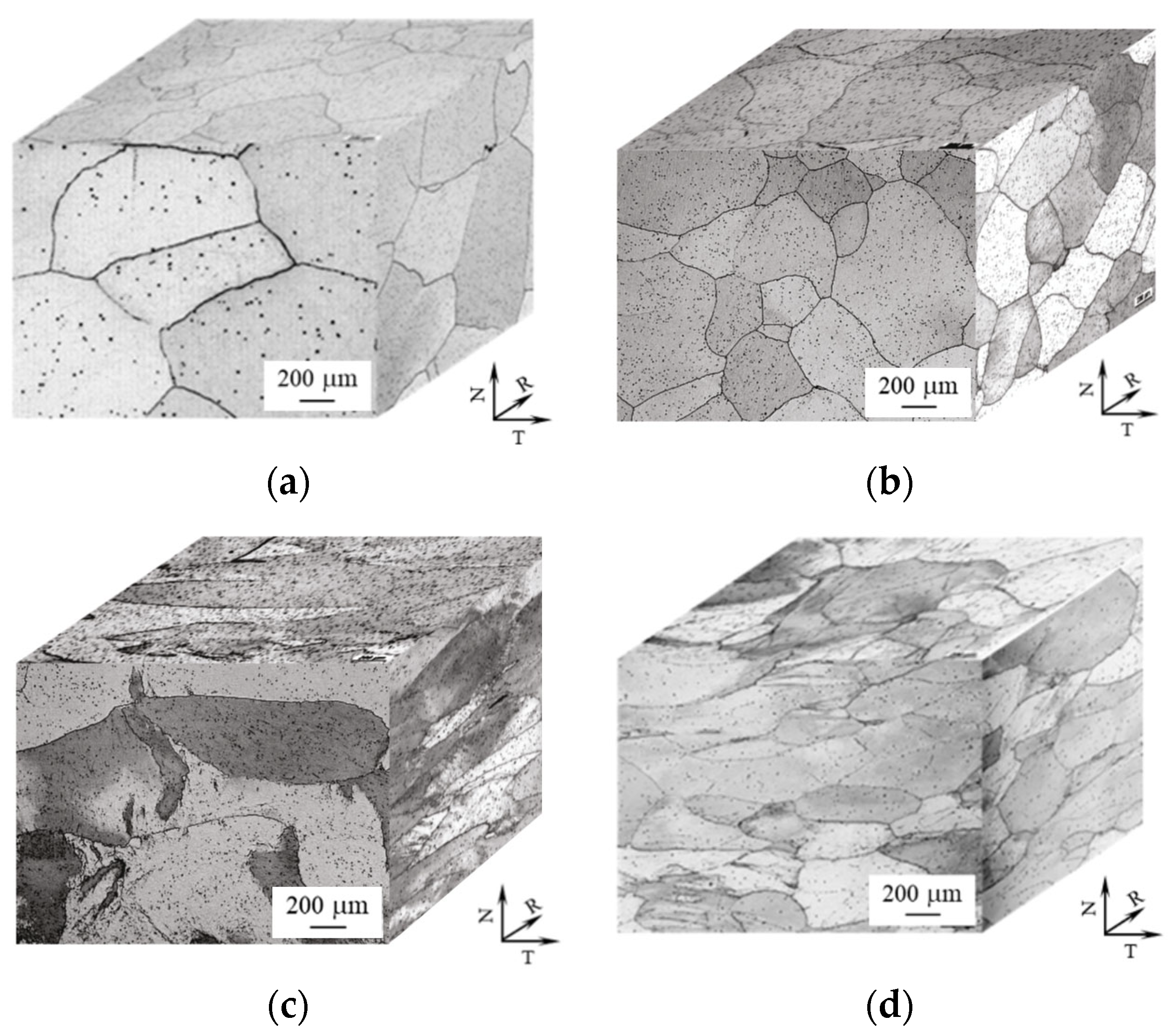
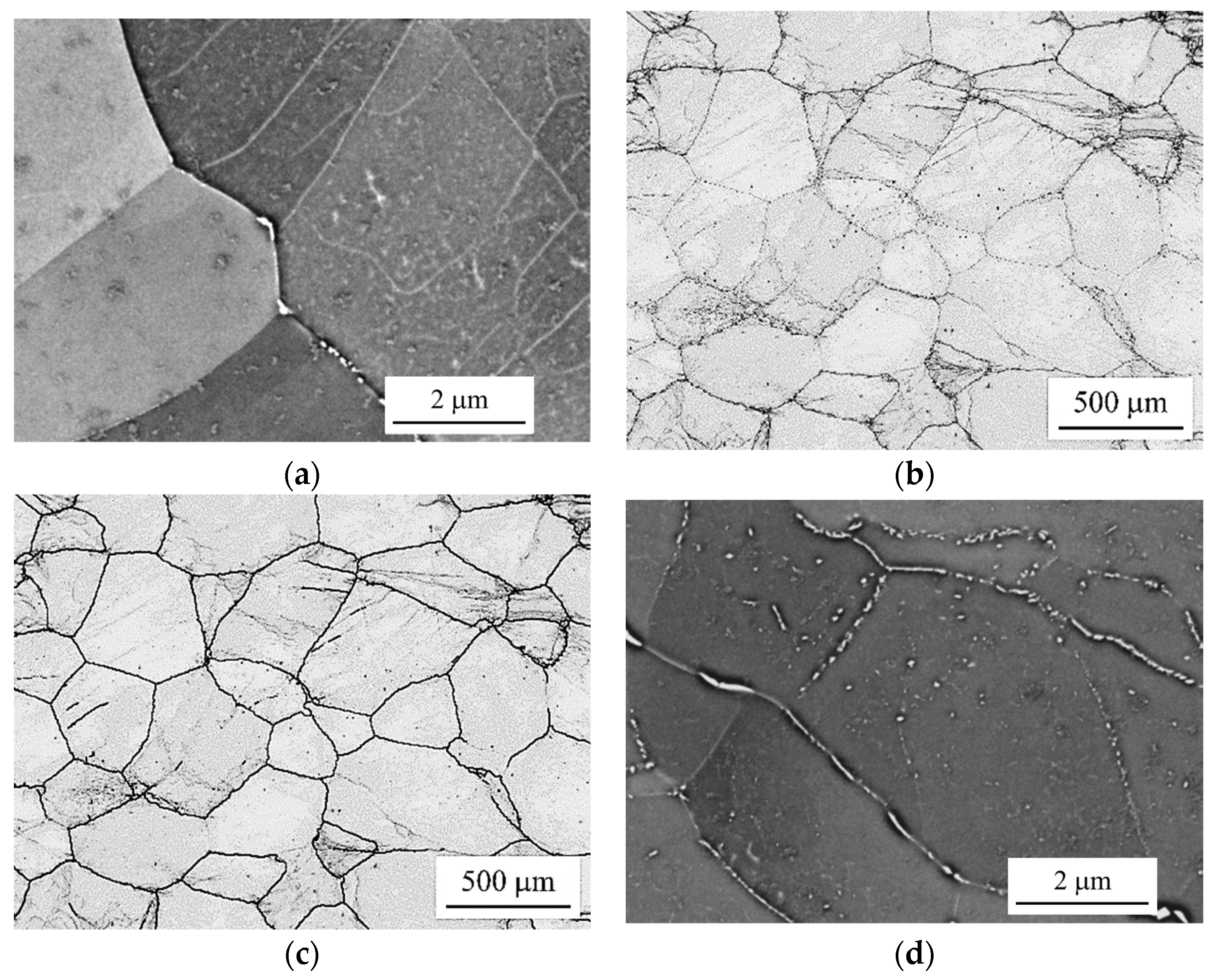
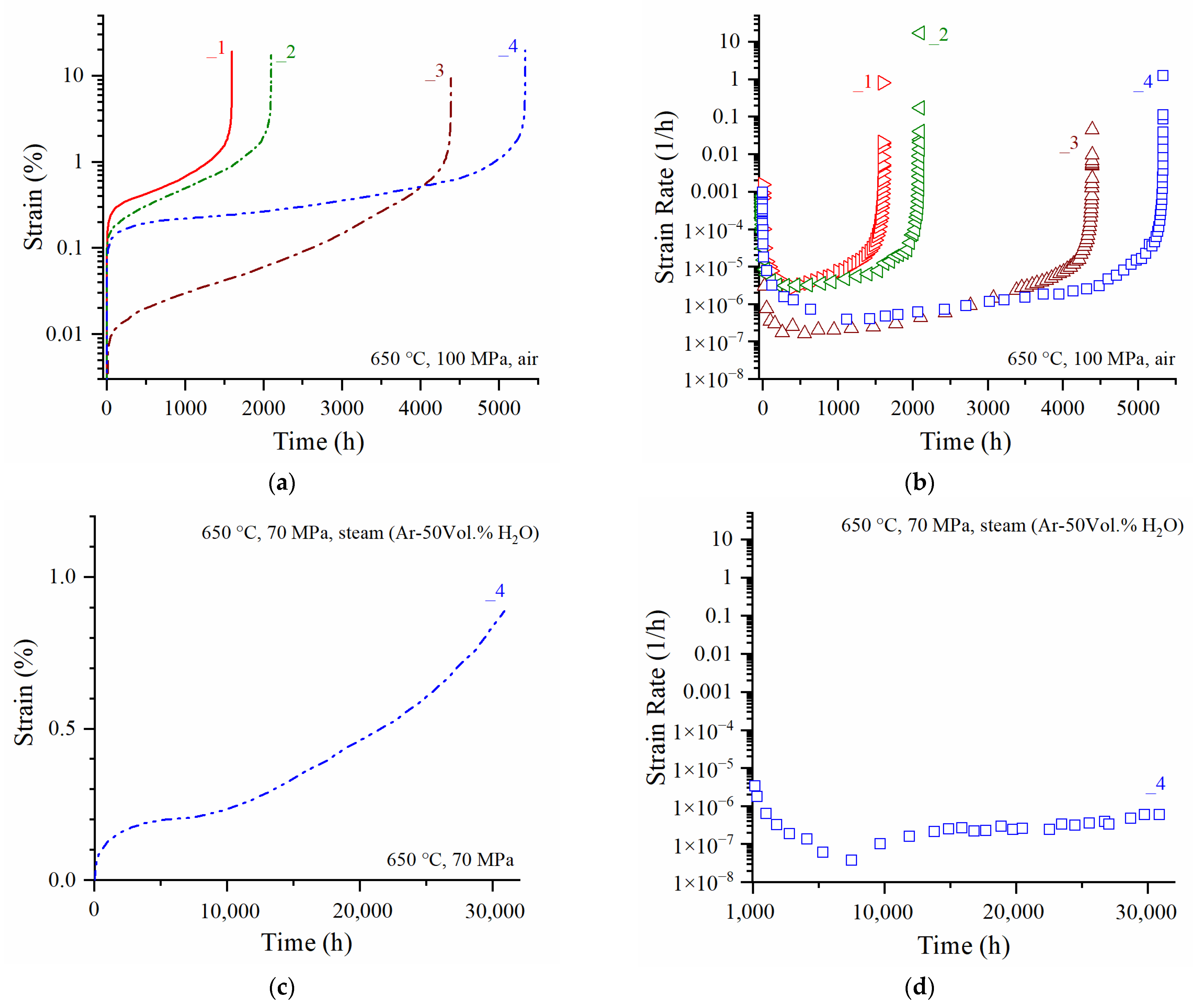
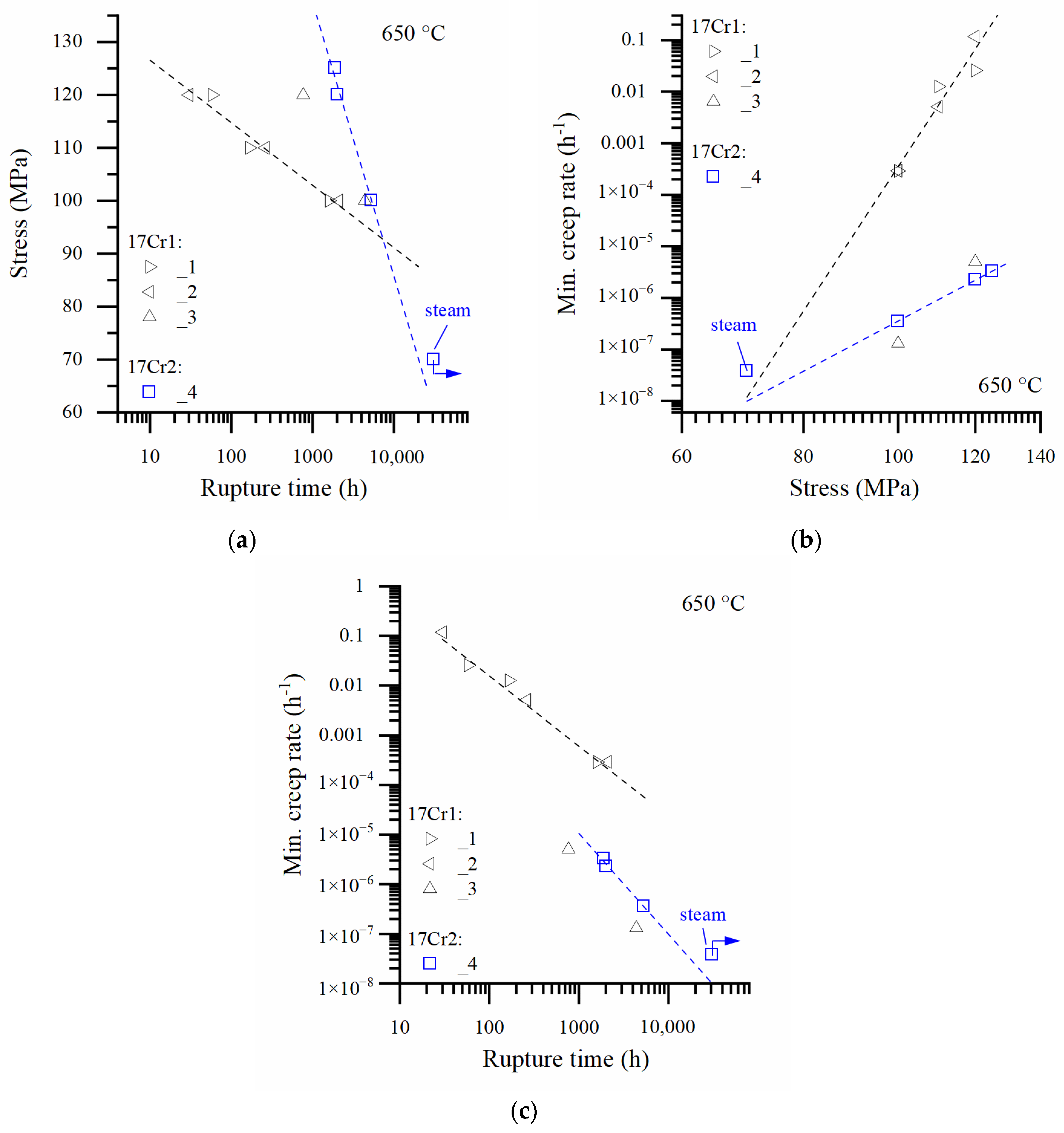
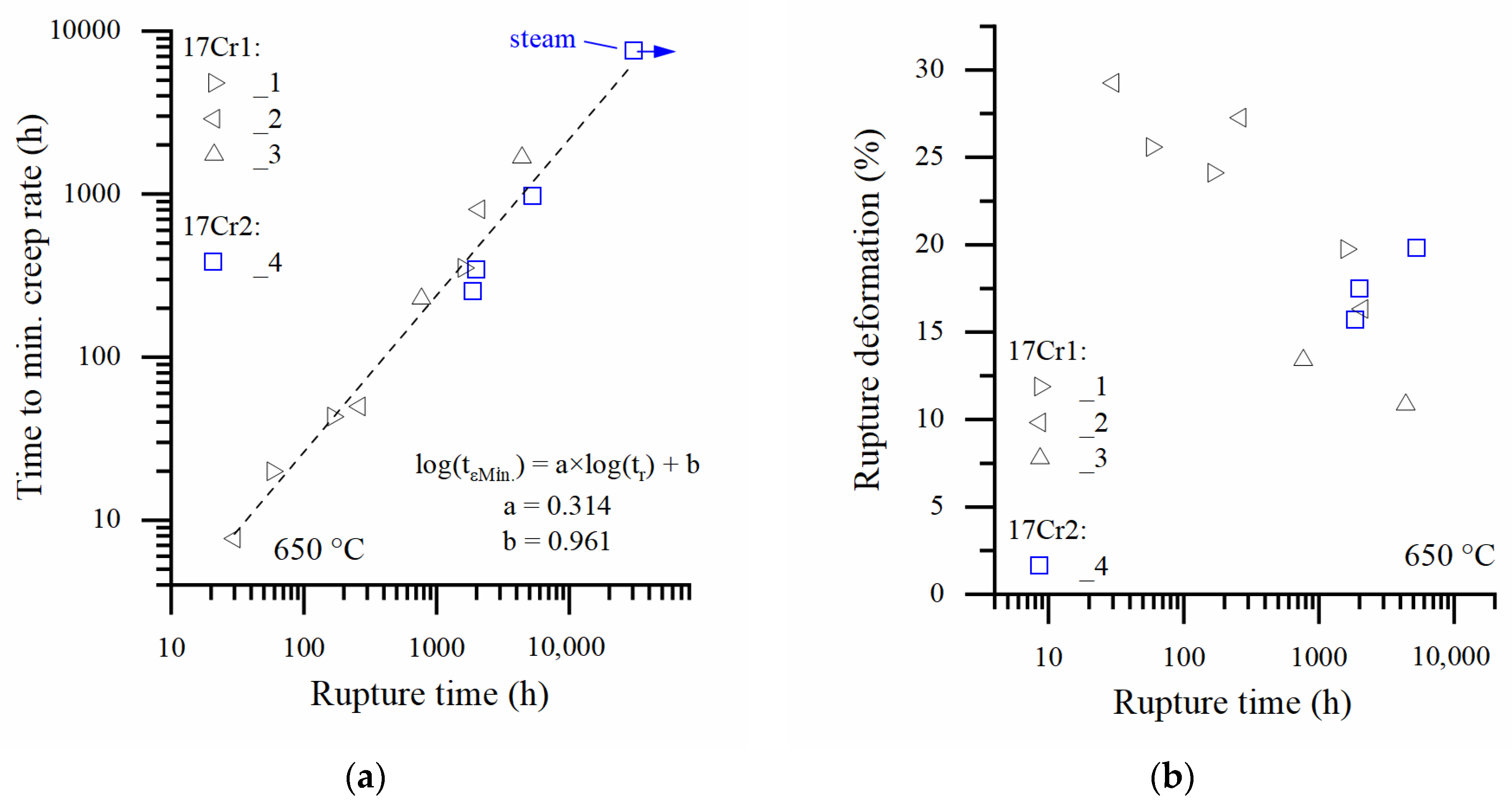

| Batch-ID: | C | N | Cr | Mn | Si | Nb | W |
|---|---|---|---|---|---|---|---|
| HiperFer 17Cr1 | <0.01 | <0.01 | 16.7 | 0.46 | 0.23 | 0.56 | 2.42 |
| HiperFer 17Cr2 | <0.01 | <0.01 | 17.1 | 0.18 | 0.25 | 0.63 | 2.41 |
| ID | Soaking | Rolling | Interpass Annealing | Cooling: | |||
|---|---|---|---|---|---|---|---|
| Temperature (°C) | Time (Min.) | Steps (-) | Thickness Reduction (%) | Steps (-) | Time (Min.) | Method (-) | |
| _1 | 1140 | 120 | - | - | - | - | - |
| 1000–960 | - | 6 | 60 | - | - | - | |
| 920 | - | final | 15 | - | - | - | |
| 1060 | - | - | - | 5 | 15 | - | |
| 1100 | - | - | - | 1 | 35 | - | |
| - | - | - | - | - | - | Air (vent.) | |
| _2 | 1140 | 120 | - | - | - | - | - |
| 1000–960 | - | 6 | 60 | - | - | - | |
| 920 | - | final | 15 | - | - | - | |
| 1060 | - | - | - | 5 | 15 | - | |
| 1100 | - | - | - | 1 | 22 | - | |
| - | - | - | - | - | - | Air (vent.) | |
| _3 | 1140 | 120 | - | - | - | - | - |
| 1000–960 | - | 3 | 55 | - | - | - | |
| 875 | - | final | 20 | - | - | - | |
| 1085 | - | - | - | 2 | 10 | - | |
| - | - | - | - | - | - | Water (stir) | |
| _4 | 1140 | 120 | - | - | - | - | - |
| 950–920 | - | 4 | 65 | - | - | - | |
| 920 | - | final | 10 | - | - | ||
| 1085 | - | - | - | 3 | 10 | - | |
| - | - | - | - | - | - | Water (stir) | |
Publisher’s Note: MDPI stays neutral with regard to jurisdictional claims in published maps and institutional affiliations. |
© 2022 by the authors. Licensee MDPI, Basel, Switzerland. This article is an open access article distributed under the terms and conditions of the Creative Commons Attribution (CC BY) license (https://creativecommons.org/licenses/by/4.0/).
Share and Cite
Kuhn, B.; Talik, M. Impact of Processing on the Creep Properties of High Performance Ferritic (HiperFer) Steels. Metals 2022, 12, 1459. https://doi.org/10.3390/met12091459
Kuhn B, Talik M. Impact of Processing on the Creep Properties of High Performance Ferritic (HiperFer) Steels. Metals. 2022; 12(9):1459. https://doi.org/10.3390/met12091459
Chicago/Turabian StyleKuhn, Bernd, and Michal Talik. 2022. "Impact of Processing on the Creep Properties of High Performance Ferritic (HiperFer) Steels" Metals 12, no. 9: 1459. https://doi.org/10.3390/met12091459
APA StyleKuhn, B., & Talik, M. (2022). Impact of Processing on the Creep Properties of High Performance Ferritic (HiperFer) Steels. Metals, 12(9), 1459. https://doi.org/10.3390/met12091459






